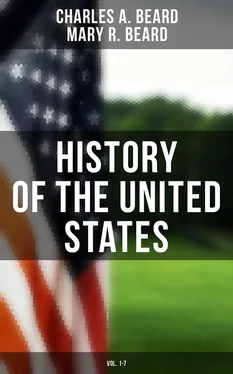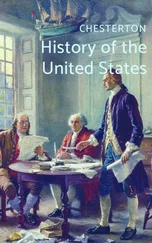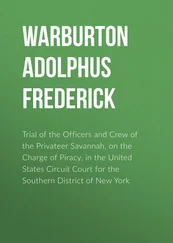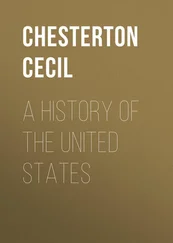Charles A. Beard, Mary R. Beard
History of the United States (Vol. 1-7)
From the Colonial Period to World War I (The Great Migration, The American Revolution, Civil War…)
Published by
 Books
Books
Advanced Digital Solutions & High-Quality eBook Formatting
musaicumbooks@okpublishing.info2018 OK Publishing No claim to original U.S. Government Works. ISBN 978-80-272-3986-3
PREFACE
PART I. THE COLONIAL PERIOD
CHAPTER I THE GREAT MIGRATION TO AMERICA
CHAPTER II COLONIAL AGRICULTURE, INDUSTRY, AND COMMERCE
CHAPTER III SOCIAL AND POLITICAL PROGRESS
CHAPTER IV THE DEVELOPMENT OF COLONIAL NATIONALISM
PART II. CONFLICT AND INDEPENDENCE
CHAPTER V THE NEW COURSE IN BRITISH IMPERIAL POLICY
CHAPTER VI THE AMERICAN REVOLUTION
PART III. THE UNION AND NATIONAL POLITICS
CHAPTER VII THE FORMATION OF THE CONSTITUTION
CHAPTER VIII THE CLASH OF POLITICAL PARTIES
CHAPTER IXTHE JEFFERSONIAN REPUBLICANS IN POWER
PART IV. THE WEST AND JACKSONIAN DEMOCRACY
CHAPTER X THE FARMERS BEYOND THE APPALACHIANS
CHAPTER XI JACKSONIAN DEMOCRACY
CHAPTER XII THE MIDDLE BORDER AND THE GREAT WEST
PART V. SECTIONAL CONFLICT AND RECONSTRUCTION
CHAPTER XIII THE RISE OF THE INDUSTRIAL SYSTEM
CHAPTER XIV THE PLANTING SYSTEM AND NATIONAL POLITICS
CHAPTER XV THE CIVIL WAR AND RECONSTRUCTION
PART VI. NATIONAL GROWTH AND WORLD POLITICS
CHAPTER XVI THE POLITICAL AND ECONOMIC EVOLUTION OF THE SOUTH
CHAPTER XVII BUSINESS ENTERPRISE AND THE REPUBLICAN PARTY
CHAPTER XVIII THE DEVELOPMENT OF THE GREAT WEST
CHAPTER XIX DOMESTIC ISSUES BEFORE THE COUNTRY (1865-1897)
CHAPTER XX AMERICA A WORLD POWER (1865-1900)
PART VII. PROGRESSIVE DEMOCRACY AND THE WORLD WAR
CHAPTER XXI THE EVOLUTION OF REPUBLICAN POLICIES (1901-13)
CHAPTER XXII THE SPIRIT OF REFORM IN AMERICA
CHAPTER XXIII THE NEW POLITICAL DEMOCRACY
CHAPTER XXIV INDUSTRIAL DEMOCRACY
CHAPTER XXV PRESIDENT WILSON AND THE WORLD WAR
Table of Contents
As things now stand, the course of instruction in American history in our public schools embraces three distinct treatments of the subject. Three separate books are used. First, there is the primary book, which is usually a very condensed narrative with emphasis on biographies and anecdotes. Second, there is the advanced text for the seventh or eighth grade, generally speaking, an expansion of the elementary book by the addition of forty or fifty thousand words. Finally, there is the high school manual. This, too, ordinarily follows the beaten path, giving fuller accounts of the same events and characters. To put it bluntly, we do not assume that our children obtain permanent possessions from their study of history in the lower grades. If mathematicians followed the same method, high school texts on algebra and geometry would include the multiplication table and fractions.
There is, of course, a ready answer to the criticism advanced above. It is that teachers have learned from bitter experience how little history their pupils retain as they pass along the regular route. No teacher of history will deny this. Still it is a standing challenge to existing methods of historical instruction. If the study of history cannot be made truly progressive like the study of mathematics, science, and languages, then the historians assume a grave responsibility in adding their subject to the already overloaded curriculum. If the successive historical texts are only enlarged editions of the first text—more facts, more dates, more words—then history deserves most of the sharp criticism which it is receiving from teachers of science, civics, and economics.
In this condition of affairs we find our justification for offering a new high school text in American history. Our first contribution is one of omission. The time-honored stories of exploration and the biographies of heroes are left out. We frankly hold that, if pupils know little or nothing about Columbus, Cortes, Magellan, or Captain John Smith by the time they reach the high school, it is useless to tell the same stories for perhaps the fourth time. It is worse than useless. It is an offense against the teachers of those subjects that are demonstrated to be progressive in character.
In the next place we have omitted all descriptions of battles. Our reasons for this are simple. The strategy of a campaign or of a single battle is a highly technical, and usually a highly controversial, matter about which experts differ widely. In the field of military and naval operations most writers and teachers of history are mere novices. To dispose of Gettysburg or the Wilderness in ten lines or ten pages is equally absurd to the serious student of military affairs. Any one who compares the ordinary textbook account of a single Civil War campaign with the account given by Ropes, for instance, will ask for no further comment. No youth called upon to serve our country in arms would think of turning to a high school manual for information about the art of warfare. The dramatic scene or episode, so useful in arousing the interest of the immature pupil, seems out of place in a book that deliberately appeals to boys and girls on the very threshold of life's serious responsibilities.
It is not upon negative features, however, that we rest our case. It is rather upon constructive features.
First. We have written a topical, not a narrative, history. We have tried to set forth the important aspects, problems, and movements of each period, bringing in the narrative rather by way of illustration.
Second. We have emphasized those historical topics which help to explain how our nation has come to be what it is to-day.
Third. We have dwelt fully upon the social and economic aspects of our history, especially in relation to the politics of each period.
Fourth. We have treated the causes and results of wars, the problems of financing and sustaining armed forces, rather than military strategy. These are the subjects which belong to a history for civilians. These are matters which civilians can understand—matters which they must understand, if they are to play well their part in war and peace.
Fifth. By omitting the period of exploration, we have been able to enlarge the treatment of our own time. We have given special attention to the history of those current questions which must form the subject matter of sound instruction in citizenship.
Sixth. We have borne in mind that America, with all her unique characteristics, is a part of a general civilization. Accordingly we have given diplomacy, foreign affairs, world relations, and the reciprocal influences of nations their appropriate place.
Seventh. We have deliberately aimed at standards of maturity. The study of a mere narrative calls mainly for the use of the memory. We have aimed to stimulate habits of analysis, comparison, association, reflection, and generalization—habits calculated to enlarge as well as inform the mind. We have been at great pains to make our text clear, simple, and direct; but we have earnestly sought to stretch the intellects of our readers—to put them upon their mettle. Most of them will receive the last of their formal instruction in the high school. The world will soon expect maturity from them. Their achievements will depend upon the possession of other powers than memory alone. The effectiveness of their citizenship in our republic will be measured by the excellence of their judgment as well as the fullness of their information.
Читать дальше

 Books
Books










